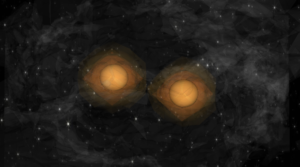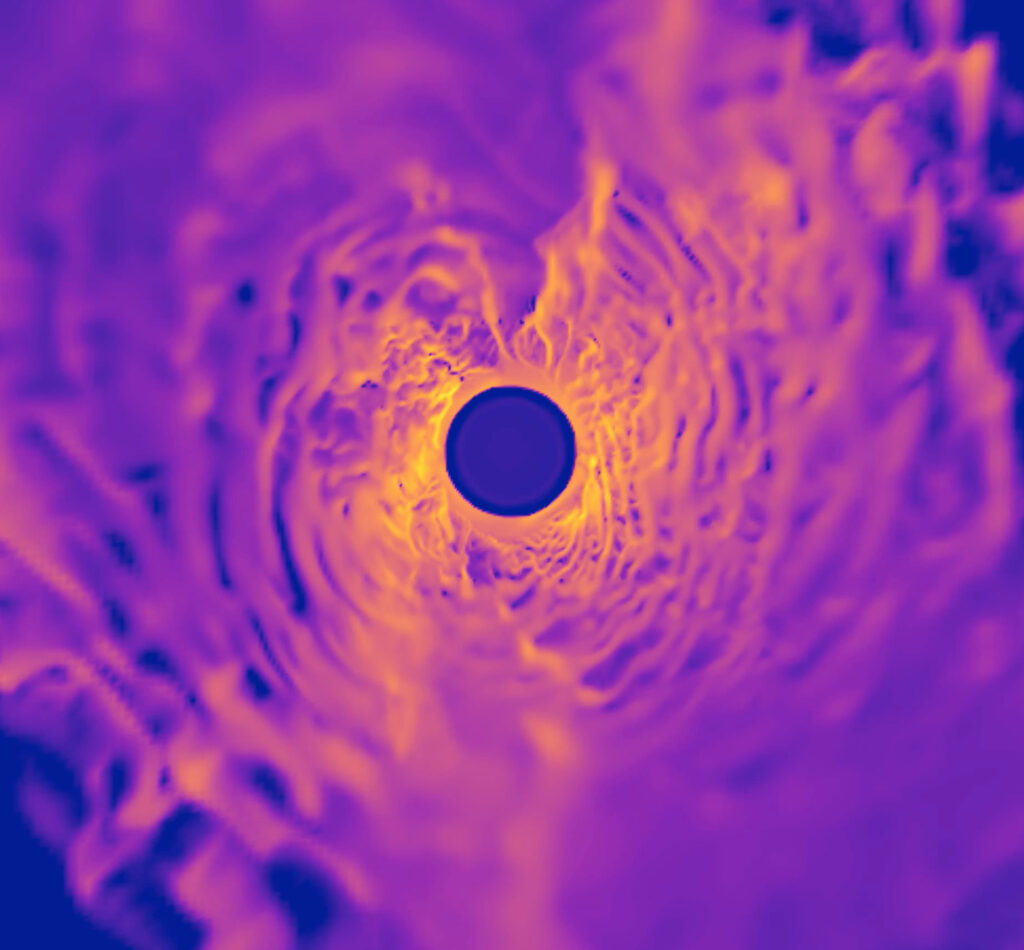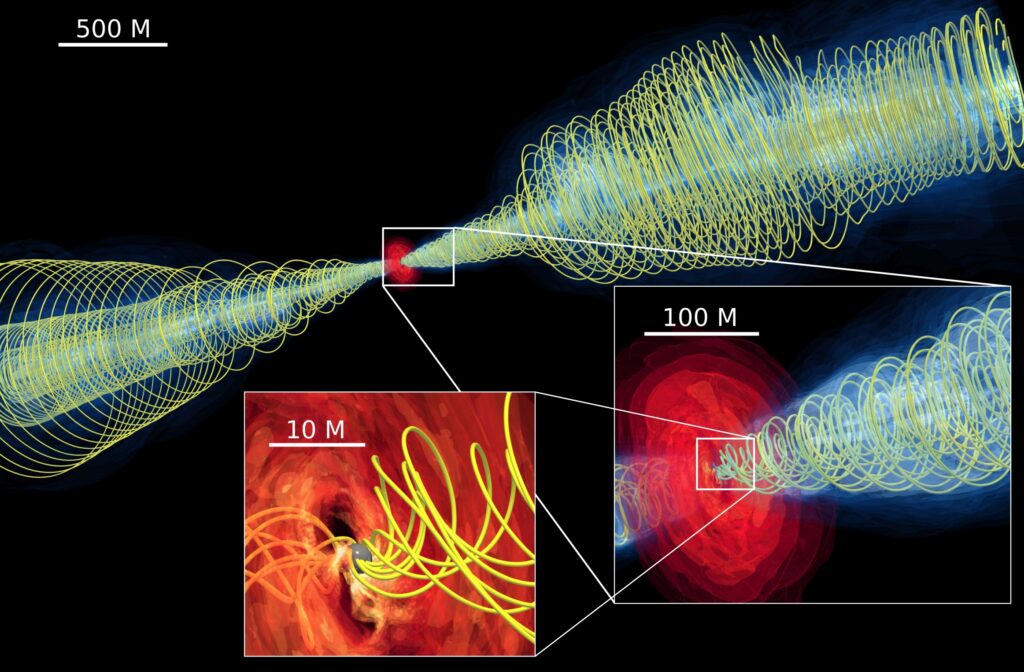Relativistic astrophysics aims to describing of some of the most extreme systems that can be found in Nature. Our group’s main interest lies in the theoretical description of the emission of relativistic collimated outflow from the remnants of binary neutron star mergers. To describe such phenomena in a self-consistent and physically accurate way, one has to be able to track the evolution of the two compact objects from the inspiral all the way up to seconds after the merger has occurred. The complex physics involved with these phenomena makes it necessary to employ sophisticated numerical simulations in order to obtain reliable descriptions of the system’s dynamics.


The Einstein Toolkit
The EinsteinToolkit is a community-driven, open-source code that allows for accurate simulations of relativistic astrophysical systems such as Compact Binary inspirals and mergers as well as simulations of isolated compact stars. It is based on the Cactus numerical framework which allows for different research groups to contribute their modular codes (called thorns) which deal with a specific aspect of the simulation.
Antelope
Antelope is our go-to thorn for the solution of Einstein’s equations. It allows us to evolve the space-time metric both in vacuum and in the presence of matter sources and supports all the most widely employed formulations of Einstein’s equations.

The Frankfurt-Illinois GRMHD code
FIL, based on the IllinoisGRMHD code, is our Generally Relativistic (Ideal) MagnetoHydroDynamics (GRMHD) solver. It employs higher-than-second order high-resolution shock-capturing methods to allow for the accurate solution of the perfect-fluid hydrodynamic equations even in the presence of strong shocks and discontinuities and was recently developed by Goethe University’s relativistic astrophysics research group.
The Black Hole Accretion Code
BHAC (Black Hole Accretion Code) is a GRMHD solver which operates on fixed spacetimes but on arbitrary coordinates and with a very sophisticated mesh refinement technique. This allows for much lighter simulations of those systems (e.g. matter accretion on a black hole and relativistic jet launching) which do not require the space-time geometry to be tracked accurately.


The Frankfurt University/KADATH initial data code
FUKA, based on the KADATH spectral solver library is a public suite of elliptic solvers designed to compute binary black hole, binary neutron star, and black hole-neutron star initial data. FUKA is capable of reliably producing initial conditions for compact object binaries that are highly asymmetric, highly spinning and capable of tuning the binary eccentricity. Nuclear matter for neutron stars can also be modeled using (piecewise-)polytropic or tabulated 1D equations of state. The codebase along with the necessary thorns to import FUKA into the Einstein Toolkit is available on [https://bitbucket.org/fukaws/].
The conjunction of all these very sophisticated numerical tools allows us to track systems such as binary neutron stars from the last few orbits of their inspiral up to hundreds of milliseconds after their merger. In the different phases of this process, different physical mechanisms are expected to drive the dynamics, hence the need for different codes each of which is better suited to describe one or more of these phenomena. For instance, FIL allows us to simulate the highly turbulent dynamics of the differentially rotating, hot, and magnetized merger remnant for the first tens of milliseconds after the collision, whereas BHAC will allow us to simulate the black hole-accretion torus system that is expected to emerge after 100ms to 1s after the merger event and which leads to the ejection of a collimated, highly relativistic jet.